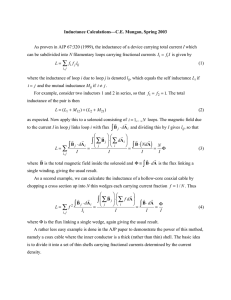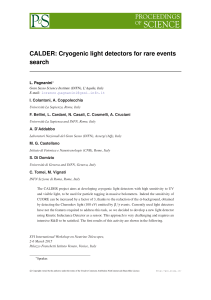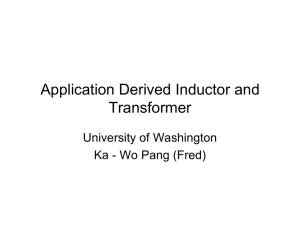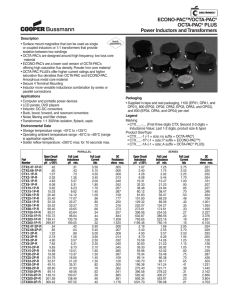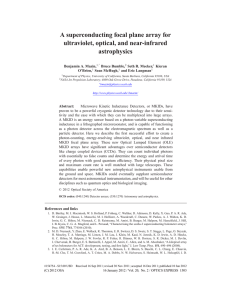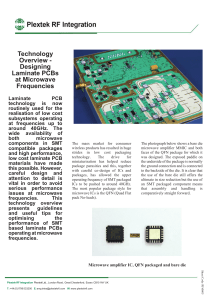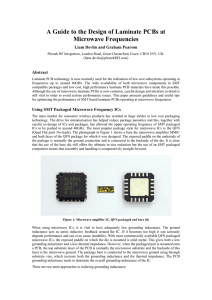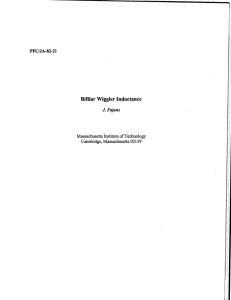Microwave Kinetic Inductance Detectors
advertisement
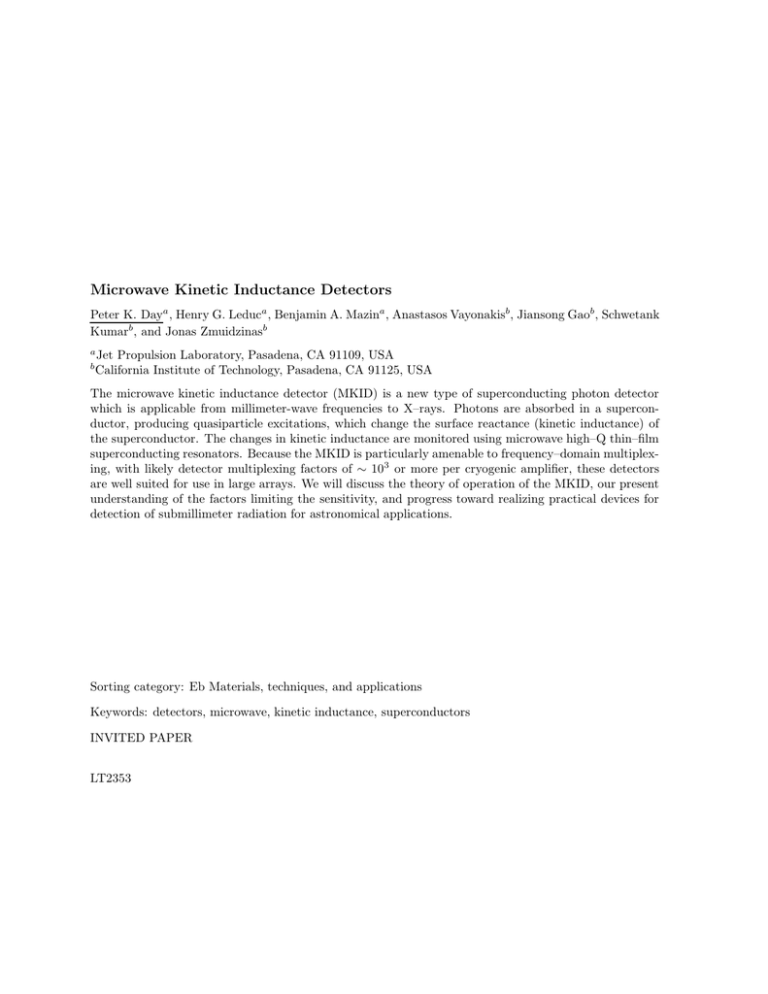
Microwave Kinetic Inductance Detectors Peter K. Daya , Henry G. Leduca , Benjamin A. Mazina , Anastasos Vayonakisb, Jiansong Gaob , Schwetank Kumarb , and Jonas Zmuidzinasb a b Jet Propulsion Laboratory, Pasadena, CA 91109, USA California Institute of Technology, Pasadena, CA 91125, USA The microwave kinetic inductance detector (MKID) is a new type of superconducting photon detector which is applicable from millimeter-wave frequencies to X–rays. Photons are absorbed in a superconductor, producing quasiparticle excitations, which change the surface reactance (kinetic inductance) of the superconductor. The changes in kinetic inductance are monitored using microwave high–Q thin–film superconducting resonators. Because the MKID is particularly amenable to frequency–domain multiplexing, with likely detector multiplexing factors of ∼ 103 or more per cryogenic amplifier, these detectors are well suited for use in large arrays. We will discuss the theory of operation of the MKID, our present understanding of the factors limiting the sensitivity, and progress toward realizing practical devices for detection of submillimeter radiation for astronomical applications. Sorting category: Eb Materials, techniques, and applications Keywords: detectors, microwave, kinetic inductance, superconductors INVITED PAPER LT2353




